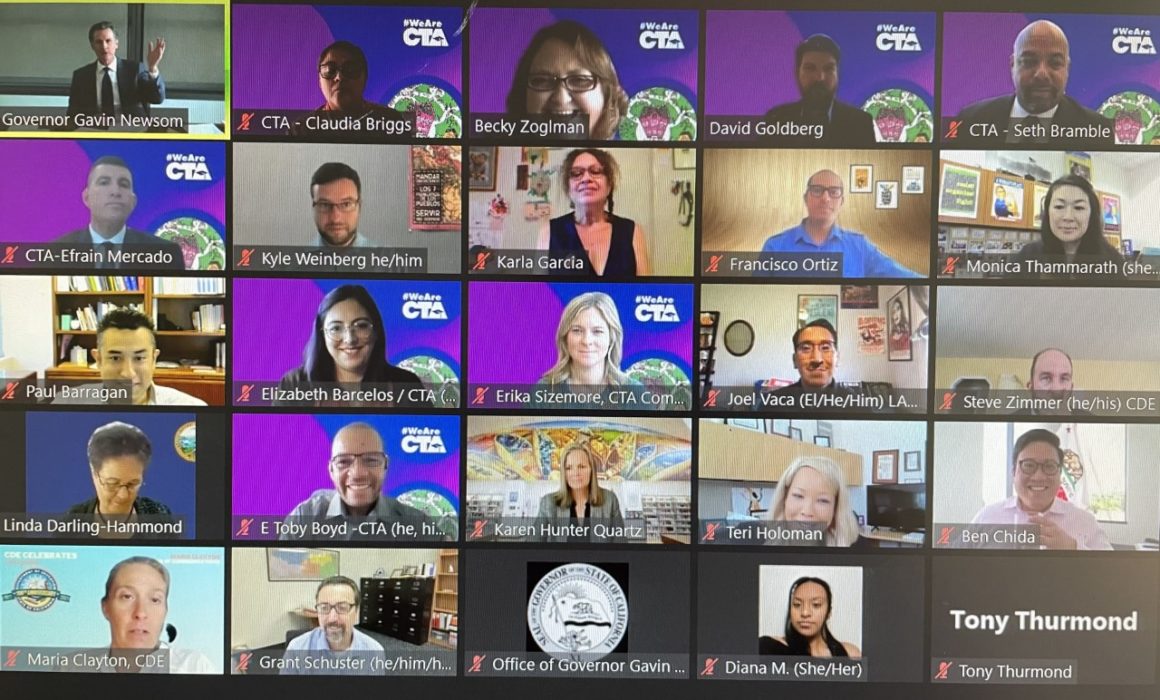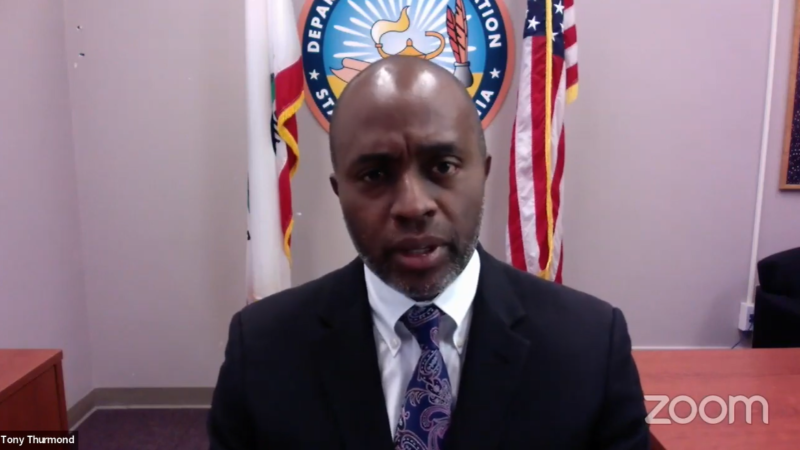
On Monday, California Governor Gavin Newsom, State Superintendent of Public Instruction Tony Thurmond and State Board of Education President Dr. Linda Darling-Hammond joined educators, parents and students in a virtual news conference to celebrate California’s historic commitment to creating and expanding community schools.
Just weeks ago, the State Board of Education approved its first round of planning and implementation grants for 268 school districts and county offices of education, part of the state’s historic, $3 billion investment in community schools, the largest investment of its kind in the nation. Community Schools are collaboratively imagined and democratically run public schools designed to meet the unique needs of local students. Through authentic governance structures and a bottom-up approach, educators, students, parents and community organizations, utilize a model of shared decision making to provide academic, emotional and community support for student success.
No two community schools are alike, because a community school is designed to address the unique needs of its students and neighborhood, using the assets of its community.
“California’s historic investment in an educational model aimed at disrupting poverty and addressing racial, economic and other inequities could not be more timely as students continue to recover, academically, socially and emotionally from an ongoing pandemic.”
– CTA President E. Toby Boyd
“We know this is just the beginning in building the schools and communities our students and their families need and deserve. This effort will take a continued commitment over several years,” Boyd said.
Governor Gavin Newsom thanked educators for their leadership and “forceful advocacy” around community schools and noted that while other states are banning books, attacking “critical race theory,” and criticizing social-emotional learning, California is quietly undertaking very significant work to reimagine public education.
“We are in the process of doing more to reimagine public education than any state in this country…This opportunity around community schools is very exciting,” said Newsom, who is proposing an additional $1.5 billion investment in community schools as part of his May Revise budget proposal, a proposal which CTA supports.
Dr. Linda Darling Hammond, President of the State Board of Education, described what a community school is: Many are open from early in the morning until early evening. They often house a health clinic, academic enrichment, homework support and job training; infuse social-emotional support into school learning; and even provide assistance with such things as rental assistance and on-site washers and driers for families.
There’s strong evidence that community schools work. Darling Hammond cited research done by the Learning Policy Institute that documents that community schools improve student attendance, student achievement and graduation rates.
“The Community School investment of $3 billion over seven years is clearly a commitment to making sure our students are happy, healthy, and thriving in schools,” said Darling-Hammond.
CTA Vice President David Goldberg spoke to educators’ strong commitment to the community school model, particularly after the past few extremely challenging years.
“These last two years have been so hard for everyone, and we’ve heard a lot of talk of, ‘we just need to get back to normal.’ …but our normal was not meeting a lot of our students’ needs. The Community Schools model brings educators, parents and communities together to establish what that new normal will look like for students who have not had access to an equitably resourced public education.”
– CTA Vice President David Goldberg
State Superintendent of Public Instruction Tony Thurmond added, “We know that since the pandemic, the need for community schools has grown even more.” He spoke to student trauma caused by the pandemic, the spike in hate against Asian Americans, and the killing of George Floyd. “Community schools can’t solve everything, but they are key to addressing the social and emotional needs of our students and addressing the trauma that our students have been through.”
Dr. Karen Hunter Quartz, Director of the UCLA Center for Community Schooling, addressed the critical support UCLA in its partnership with the Alameda County Office of Education will provide as a Statewide Technical Assistance Center. Community school coordinator Joel Vaca, of the Los Angeles School of Global Studies, spoke to how the community school made them well-positioned to respond to family needs during the pandemic.
“We saw how wide the digital divide was…We used alternative forms of communicating with our parents. We shared information and resources to allow some of (our families’) housing and food needs to be met. We connected them with vaccination centers once they were up and running,” Vaca said.
Diana Matias Carillo, an incoming 11th grader at Fremont High School in Oakland and a Californians for Justice youth leader, spoke passionately about what students, and particularly students of color, gain from community schools, “Community Schools offer a safe space to students who feel lost in a world where there’s still major systems of oppression. Students of color need a place where all their identities and complex experiences are celebrated.”
Take a closer look at CTA’s advocacy around community schools.





The Discussion 0 comments Post a Comment